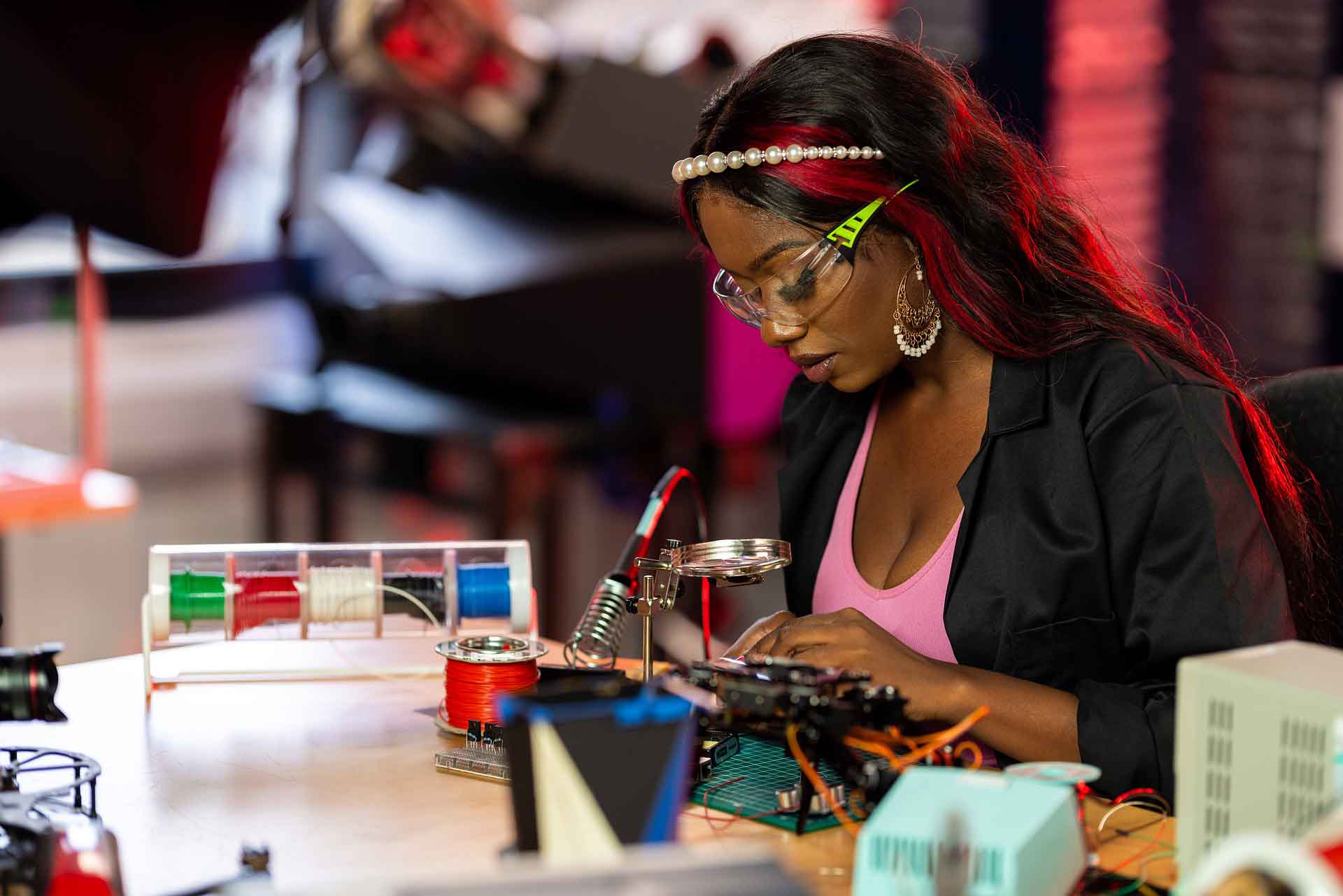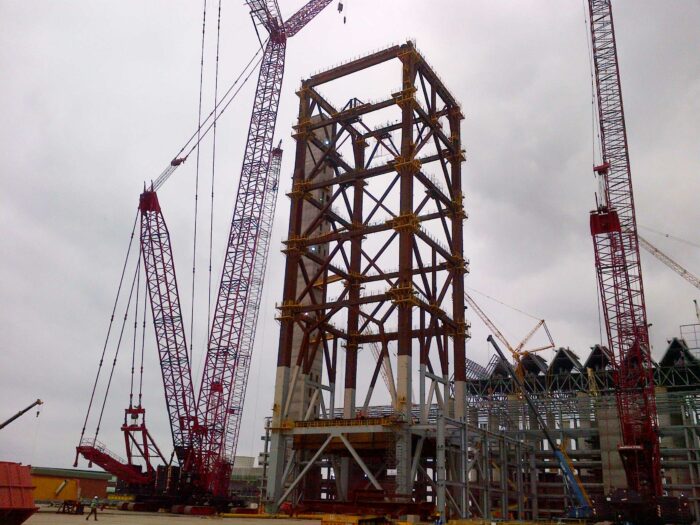
State-owned entities can and should play a catalytic role in innovation in South Africa. Revitalising their contribution is an explicit policy outlook for the National System of Innovation, as reflected in the 2019 White Paper on Science, Technology and Innovation. The HSRC convened a policy dialogue in October 2022 to contribute research on new indicators for research, development and innovation by state-owned entities to inform this commitment. By Gerard Ralphs and Nazeem Mustapha
Recent public policy debate has been all but overwhelmed by the immediate impacts of large state-owned entities (SOEs), such as Eskom and Transnet, on South Africa’s fiscal and economic performance.
Far less attention has been paid to their role in innovation, whether sectorally, nationally or globally.
Policy initiatives such as the 2010 Presidential Review Committee on SOEs, the 2014 OECD stocktaking of SOE challenges and reforms in Southern Africa and, most recently, the Zondo Commission, have served the purpose of a much-needed status check-in. New governance structures such as the Presidential State-owned Enterprises Council have placed improved SOE organisational performance squarely in the crosshairs at the highest level of decision-making.
Within this context, the October 2022 dialogue served to reinforce the value of systematically tracking research, development and innovation in SOEs. Such tracking, to the extent it informs broader SOE governance decision-making, has thus far been largely peripheral or missing within organisational monitoring and evaluation towards improved delivery of their mandates. This is an evidence gap the HSRC is working with partners across government to redress.
Figure 1. R&D expenditure by SOEs has declined since the global financial crisis.
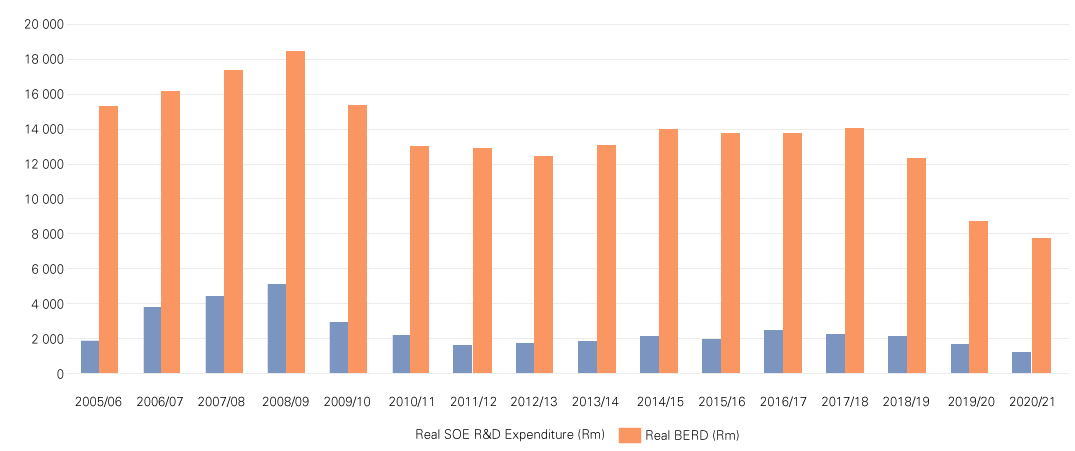
Source: R&D Survey/HSRC
A look back on key trends
Before the global financial crisis of 2008/2009, SOEs formed a fairly substantial component of R&D activity in South Africa’s business sector, contributing as much as 28% in 2008/09 to this sector’s expenditure on R&D.
Notwithstanding current challenges, applied R&D conducted at entities such as Eskom and allied energy SOEs, such as the South African National Energy Development Institute (SANEDI), has served to reinforce the country’s capacity for generation of electricity reaching both industry, municipal users and household consumers, as well as to explore energy alternatives.
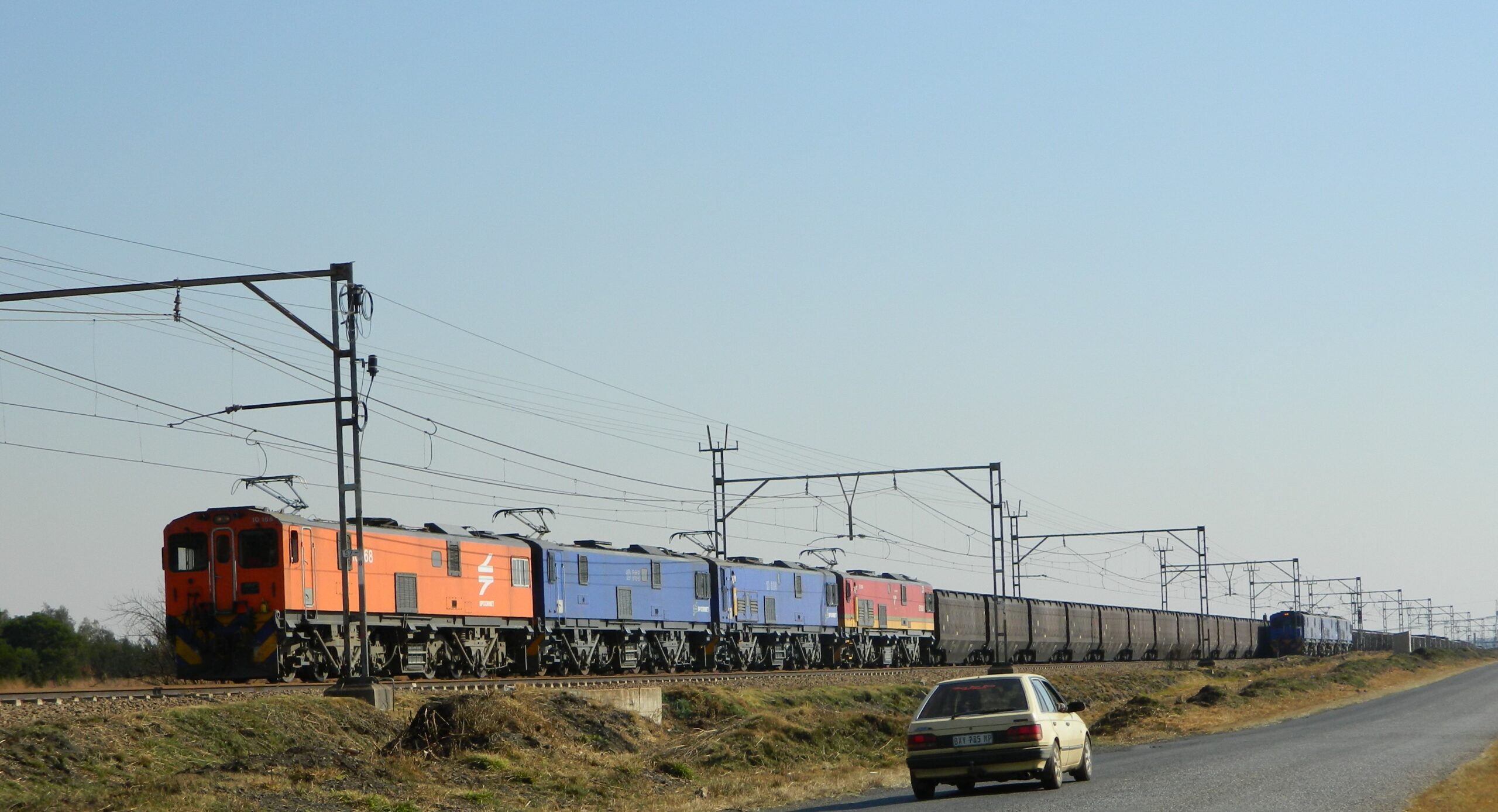
Photo: Bob Adams, Wikimedia Commons
The same “taxpayer subsidisation of industry” argument may be attributed to other SOEs, for example, Transnet whose infrastructure advantage, where leveraged, has helped to reduce transport costs of goods and services. Again, the role of R&D should not be discounted.
Particularly worrying, then, is that in real terms, SOEs’ expenditure on R&D in 2020/21 was the lowest since 2005/06. Reflecting on the trend R&D data presented by HSRC (Figures 1 and 2), Dr Mmboneni Muofhe, a senior official in the Department of Science and Innovation (DSI), expressed particular concern.
SOEs are economically important for various reasons, he explained. Historically, they have served as a training ground for many young professionals. Muofhe argued, however, that one of the characteristics that once helped them to thrive – close relationships between different players in this space – is now putting them at risk. So, when investment decreases for some – for example an academic institution that SOEs have agreements with – it affects the entire ecosystem, he explained.
Figure 2. The number of R&D personnel employed by SOEs has remained static, despite increasing numbers of overall R&D personnel in South Africa.
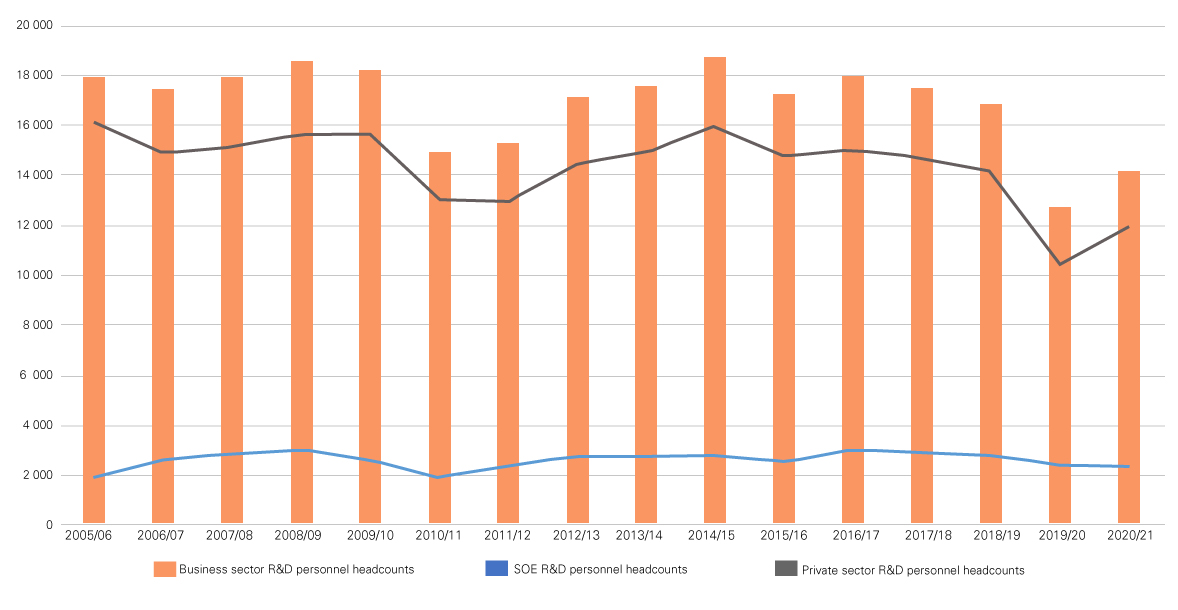
Source: R&D Survey/HSRC
Research informing this dialogue
In 2016, the HSRC’s Centre for Science, Technology and Innovation Indicators (CeSTII) began working closely with the DSI on an analytical project to explore data on SOEs from the HSRC’s yearly R&D survey.
The centre followed this with in-depth research focusing on three SOEs: the SANEDI, Air Traffic and Navigation Services (ATNS), and South African Forestry Company SOC Limited.
An interrogation of the conditions that enable, support and facilitate R&D and innovation in SOEs (Table 2) informed a proposal for new indicators that SOEs and the government more broadly can use to track R&D and innovation (Table 1).
Speaking at the dialogue, HSRC director of strategic partnerships Dr Palesa Sekhejane said it was important to convene public policy dialogues to share this information.
Vital to understand SOE post-apartheid mandates
In his remarks to the panel, HSRC research director Dr Thokozani Simelane, who has worked on SOEs for several decades, discussed two distinct ways in which SOE mandates were expanded after the end of apartheid.
The first shift, he argued, was towards profit-making, while the second was driven by the state’s articulation of a parallel responsibility to “answer to the many social needs and aspirations of the country”. While laudable, putting these mandates into operation proved challenging in practice, Simelane said. “When South Africa opened up as a market, it found most SOEs not gearing.”
The case study research performed by the HSRC adapted the management concept of gearing to shed light on the organisational features of SOEs considered key for R&D and innovation. These features included human and technological capabilities, networks, research infrastructure, and governance.
The HSRC team’s working hypothesis was that if an SOE was gearing appropriately, then it would be in a position to leverage R&D and innovation to achieve its multiple mandates efficiently and effectively, and this would show up in the research findings. If it was not gearing appropriately, then a set of questions arise as to what investment or organisational change would be required to facilitate the development of R&D and innovation capabilities in the future.
Overcoming barriers
Reflecting on the HSRC case study results for ATNS, their senior manager for infrastructure research and management Nokuthula Phakathi said declining research funding, technology adoption and skills shortages in robotics and AI were among the barriers to advancing R&D and innovation.
Solving these challenges could help ATNS provide cheaper air travel.
Networks and leadership were key to driving R&D and innovation investments, Phakathi said. “We all know the environment is tricky and [there are] regulatory challenges. We need to be agile. We need to work towards goals [and] we need to allow our employees to be creative.”
Policy options
In summative remarks at the dialogue, CeSTII executive head Dr Glenda Kruss said there “is no single policy option for government”. She highlighted the systemic, organisational and institutional dimensions of innovation policy interventions (see box).
Dialogue takeaways from innovation policy specialist Dr Glenda Kruss
Systemic level
“We need to think in terms of platforms, enablers and funding streams; and start with R&D and innovation as strategic drivers.”
“We must talk systems – the language of ecosystems, NSI and sectoral systems – linking to value chains, and putting competition front and centre.”
Institutional level
“Systems are located within policy regulation frameworks and it is important to promote alignment across the work of different government departments.”
“The dialogue discussion emphasised the need to pay attention to the layer of institutions, including leadership, agility and skills. We need to build institutional capabilities in SOEs.”
“Indicators are needed at different levels for different purposes. Policy actors need systems indicators to see how the system is doing but SOEs themselves need RDI performance indicators and institutional indicators to strengthen organisational capabilities, which are difficult but vital to design.”
Organisational level
“Most of the R&D is applied research, which puts it very close to the domain of innovation.”
“One of the dimensions most picked up is collaboration [but] this is not an easy activity to incentivise. How do we incentivise collaboration?”
Table 1. Proposed indicators of R&D and innovation activities in SOEs
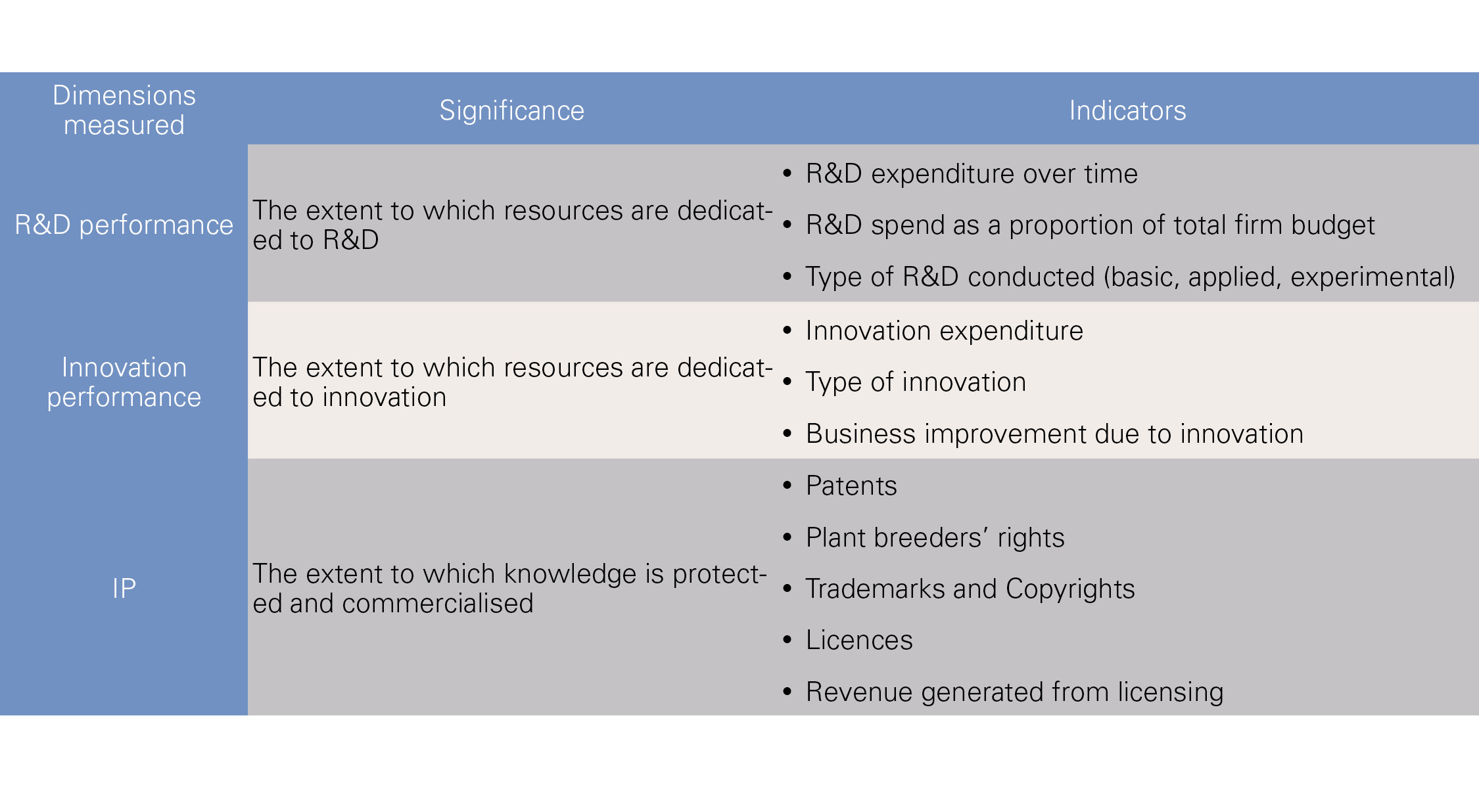
Table 2. Conditions that enable, support and facilitate R&D and innovation in SOEs
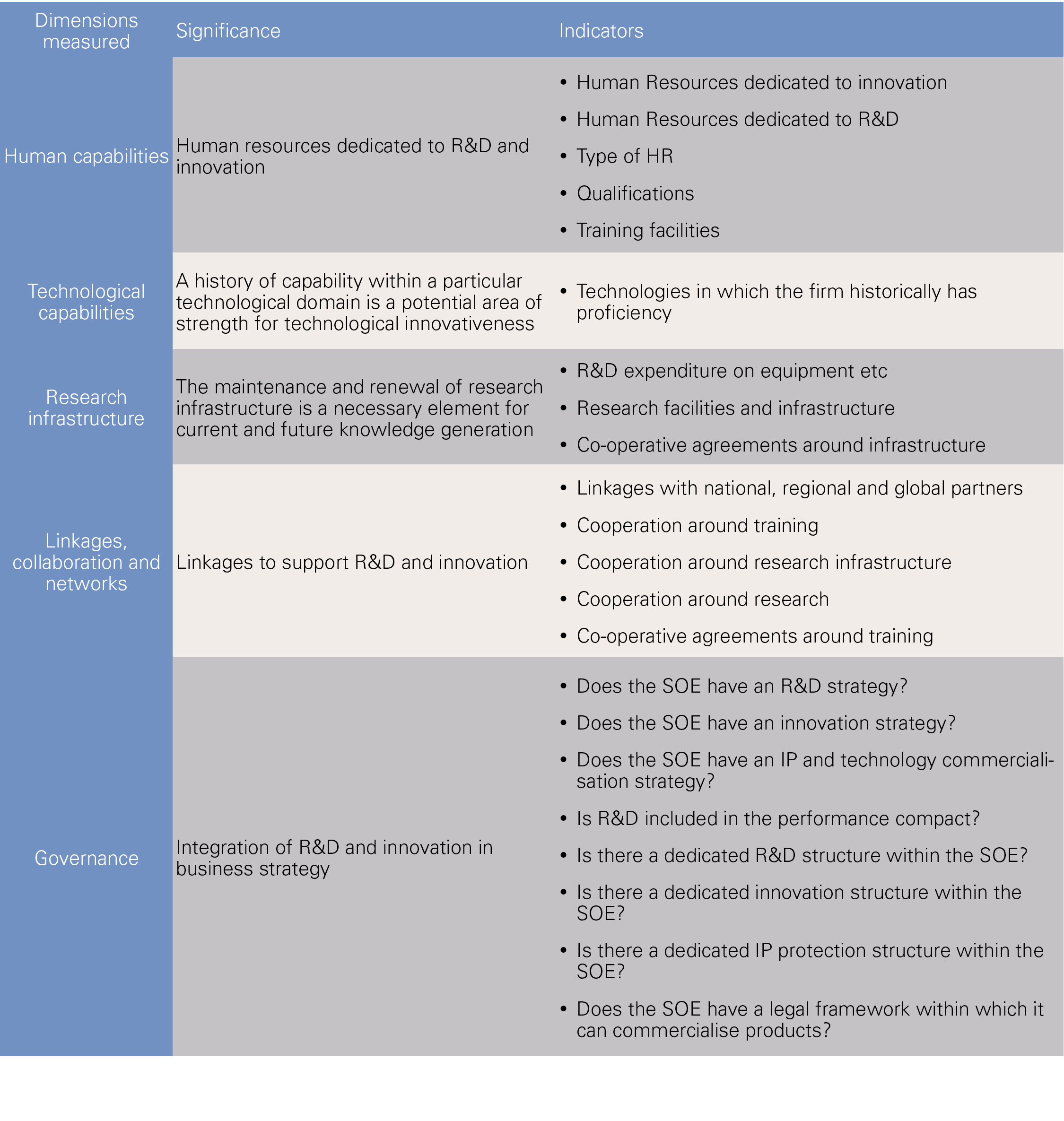
To download the reports, click here.
Authors: Gerard Ralphs, programme manager, and Nazeem Mustapha, chief research specialist, in the HSRC’s Centre for Science, Technology and Innovation Indicators.

